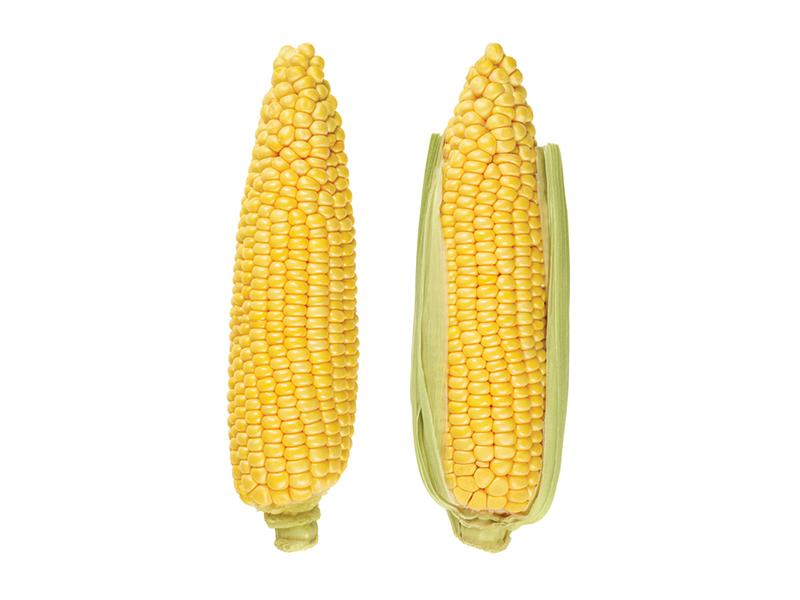November 2019
Karen Sutherland’s regular permaculture tips.
Some summer vegetables are just made for growing together. In the three-sisters method used by Native Americans, three types of vegetables are grown together in a tight companion planting, which has been practiced for centuries. Corn plants are planted first, and allowed to develop to about 15 centimetres high, which should take about three weeks in good growing conditions. These are going to be the supports for climbing beans, which can now be planted. A couple of weeks later, pumpkin seeds can be planted. These will become a living mulch, growing around the base of the corn and beans to keep the soil cool and moist. The beans will fix nitrogen into the soil, feeding the corn and pumpkin plants. Plant the corn in a group of about four–five plants, surround them with a circle of about six climbing beans, and then surround the beans with around three–four smaller growing varieties of pumpkins, such as Butternut, or if you have limited space you could use bush types such as Golden Nugget.
Strongly scented plants such as Feverfew, allowed to self-seed and grow amongst your vegetable garden, can help to “scent mask” – confusing pest insects trying to locate your precious vegetables. Feverfew is a short-lived perennial plant that will flower almost continuously in the garden. Other strongly scented plants can be planted upwind of plants in the garden needing protection. Look for plants such as passionfruit marigold Tagetes lemmonii, cotton lavender Santolina chamaecyparissus and lavenders.
At this time of year, shade starts to seem like a really good idea, even in a food garden. However, the balance of sun and shade is important to get right, to maximise productivity. The success of a food forest is partly due to how shade is managed as the plants grow. Take inspiration from Indigenous land management, which used fire to keep chosen areas open to the sun for important food sources such as tubers (think yam daisy) and grasses with edible seeds such as kangaroo grass. Urban food forests don’t need cool burns to do this, but it serves as an example of how to manage a landscape to maximise harvest. If left unchecked, trees and shrubs will inevitably change the landscape beneath them by competing for sun, water and nutrients. Some edible plants will tolerate or even thrive in shade, but many do not, so study your plants and find out what they need. To maintain sunny patches in your food forest long-term, select fruit and nut trees wisely so they won’t close their canopies completely over the years and shut out the sun. Space any larger plants far enough apart to retain the patches of light that will still allow for varied planting in five or more years’ time when your tree canopies develop. Also, make use of the wide variety of dwarf fruit and nut trees now available, to increase your harvest diversity and time frames without closing in your airspace.
In southern parts of Australia, now is a great time to plant warm climate plants such as passionfruit, citrus and avocados. By getting such plants established well before cold weather returns next winter, you give them a chance to put down good root systems early in life, giving them a good start, so they can bear fruit much earlier. If you delay planting until autumn, a cold winter can kill off any of these plants, or at the very least, delay their development. All of these plants need well-drained and rich soils, so make sure to improve your soil properly. For clay soils, add gypsum at one–two kilograms/square-metre to help with drainage, and incorporate well-rotted compost and cow manure with either clay or sandy soils, to increase soil nutrient levels and also the range of soil organisms.
Although it’s tempting to leave self-seeded avocados to see what they will do, they may take seven years or so to fruit, and might never produce a harvest. To avoid disappointment, buy grafted plants, of cultivars such as the early fruiting and cold-tolerant Hass or the cold-tolerant but slower to produce Bacon. These two varieties will also cross-pollinate each other, increasing your overall harvest. Look for a variety called Lamb Hass for urban gardens as they are slightly smaller trees. Avocado plants require special treatment to get established, needing a shade-cloth tent over them for the first two–three years of life, to protect them from extremes of heat and cold, as they have delicate bark that can sunburn easily and sustain permanent damage to the tree, and severe cold can damage tender new growth. See Karen Sutherland’s YouTube for some more avocado growing information if you are gardening in southern parts of Australia.
While leaves of tea mints and their cousins, such as peppermint, chocolate mint and lemon balm are lush and disease-free before humidity kicks in, make sure to harvest some for winter use. Dried home-grown teas with little labels also make great gifts. Peppermint is refreshing and cooling, drunk either hot or cold, to balance digestion after a spicy meal, and can also be added to dried yarrow and elderflower to make a medicinal mix for colds and flu, or used alone to help settle morning sickness. Chocolate mint can be used in a similar way to peppermint, but has an extra-luscious flavour, making it perfect after a meal. Lemon balm will help settle a nervous stomach, has anti-viral properties and is a tea that is both refreshing and generally health boosting. All of these minty teas can be made into tasty cordials.



